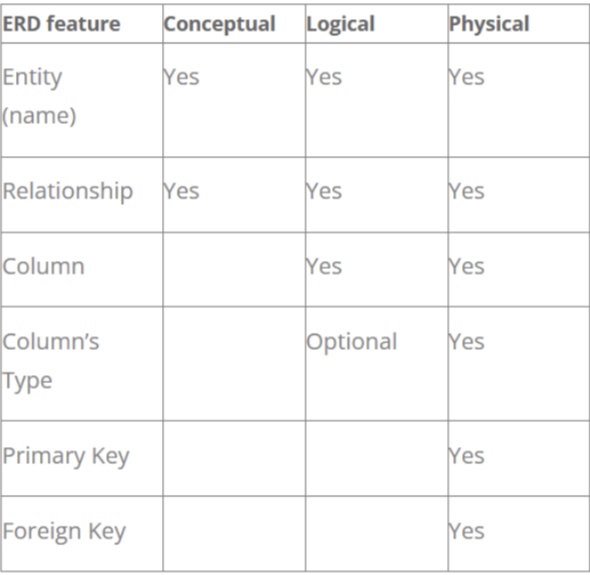DATABASE Module 7-8
1/20
There's no tags or description
Looks like no tags are added yet.
Name | Mastery | Learn | Test | Matching | Spaced |
|---|
No study sessions yet.
21 Terms
Data Modeling
process of creating a conceptual representation of data, typically in the form of a data model.
Best Practices for Building Data Models (1/8)
Understanding the business requirement
Best Practices for Building Data Models (2/8)
Use a consistent naming convention
Best Practices for Building Data Models (3/8)
Avoid data rebundancy
Best Practices for Building Data Models (4/8)
Enforce data integrity
Best Practices for Building Data Models (5/8)
Use appropriate data types
Best Practices for Building Data Models (6/8)
Test and validate the model
Best Practices for Building Data Models (7/8)
Document the model
Best Practices for Building Data Models (8/8)
Review and update the data model regularly
Types of data models
Conceptual Data Model
Logical Data Model
Physical Data Model
Conceptual Data Model
high-level representation of the data and the relationships between them. Understand the overall structure of the data
Logical Data Model
more detailed representation of the data, includes information about entities, attributes, and relationships. Is technology-independent
Physical Data Model
final/most detailed representation of the data, includes information about specific technology and database will be used to store the data.
Conceptual vs Logical vs Physical Model

Object Oriented Databases
Represents data as objects and classes
Relational Databases
Represents data in tables and rows
Database Design
process of creating a structured plan how data will be stored, organized, accessed within database
Steps in Database Design Process (GCCTCPI)
Gathering
Creating Conceptual
Translating
Creating Physical
Implementation
Three Main types or Relationships in Database Design
One to one R
One to many
Many to many
Components of Entity Relationship Diagram
Entities
Attributes
Relationships
Cardinality
Connectivity
Participation
Keys
Visual Representation ER Models
Rectangle - Entity
Elipses - Attributes
Diamonds - Relationships
Lines - Connect entities
Crow’s Foot notation - Indicate cardinality
Dashed lines - Indicare weak or optional R
Primary Key notation
Foreign Key notation